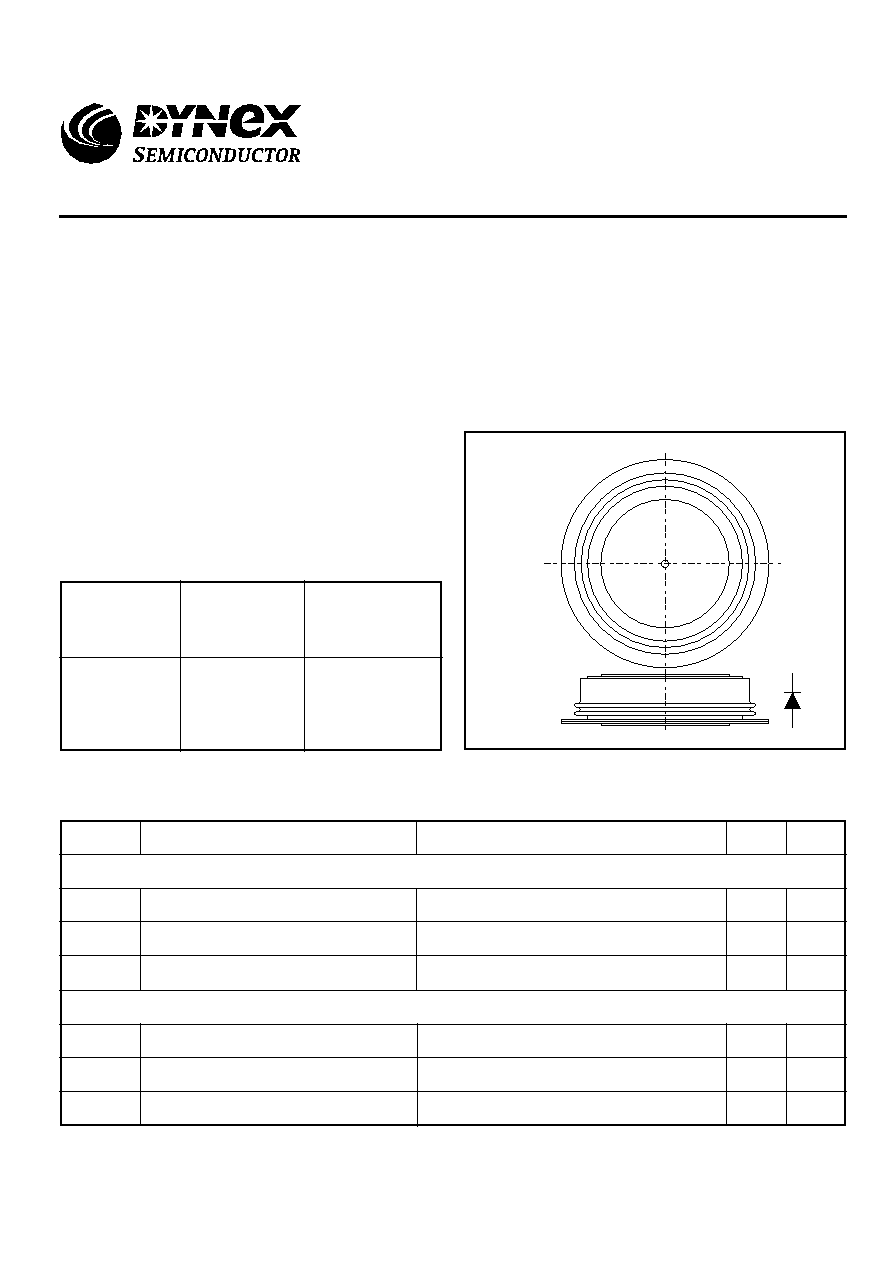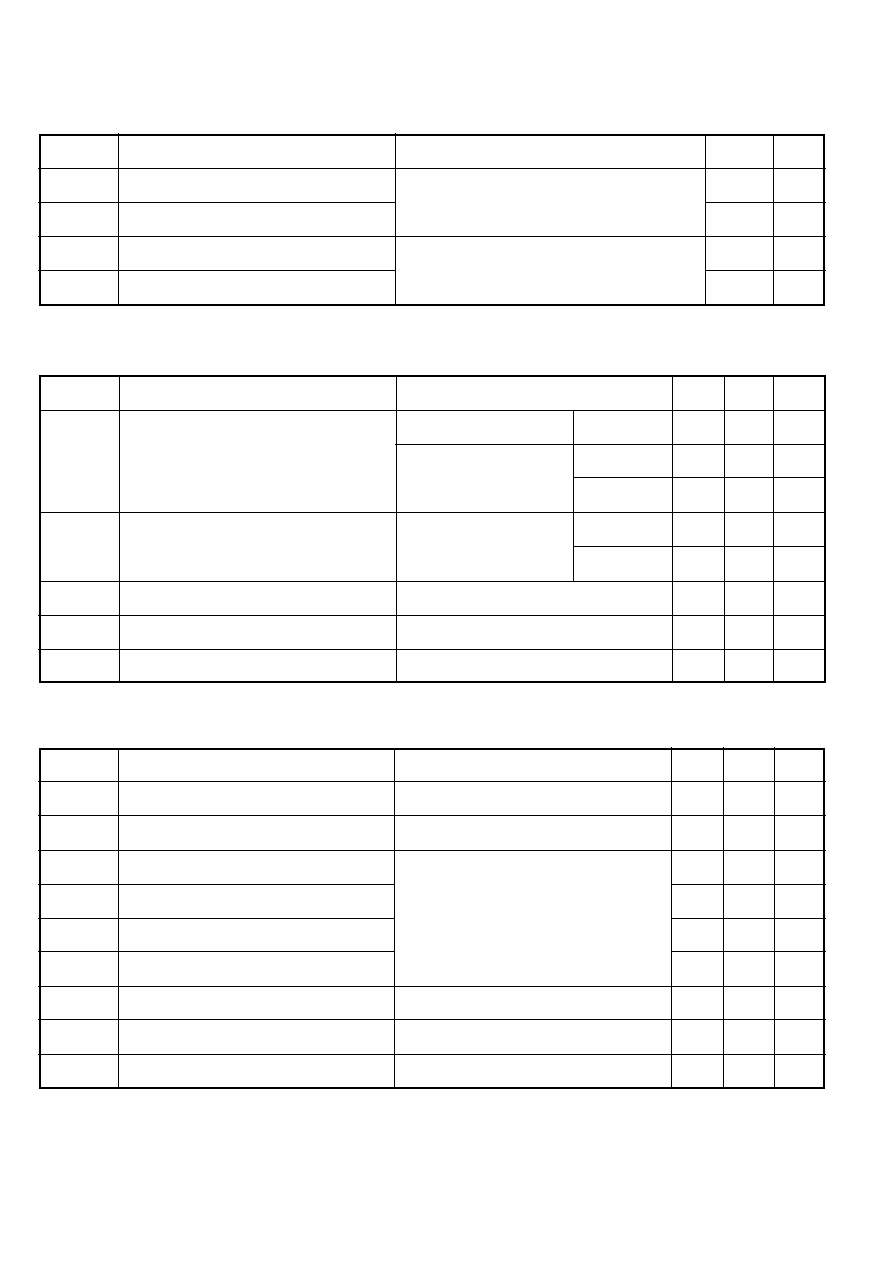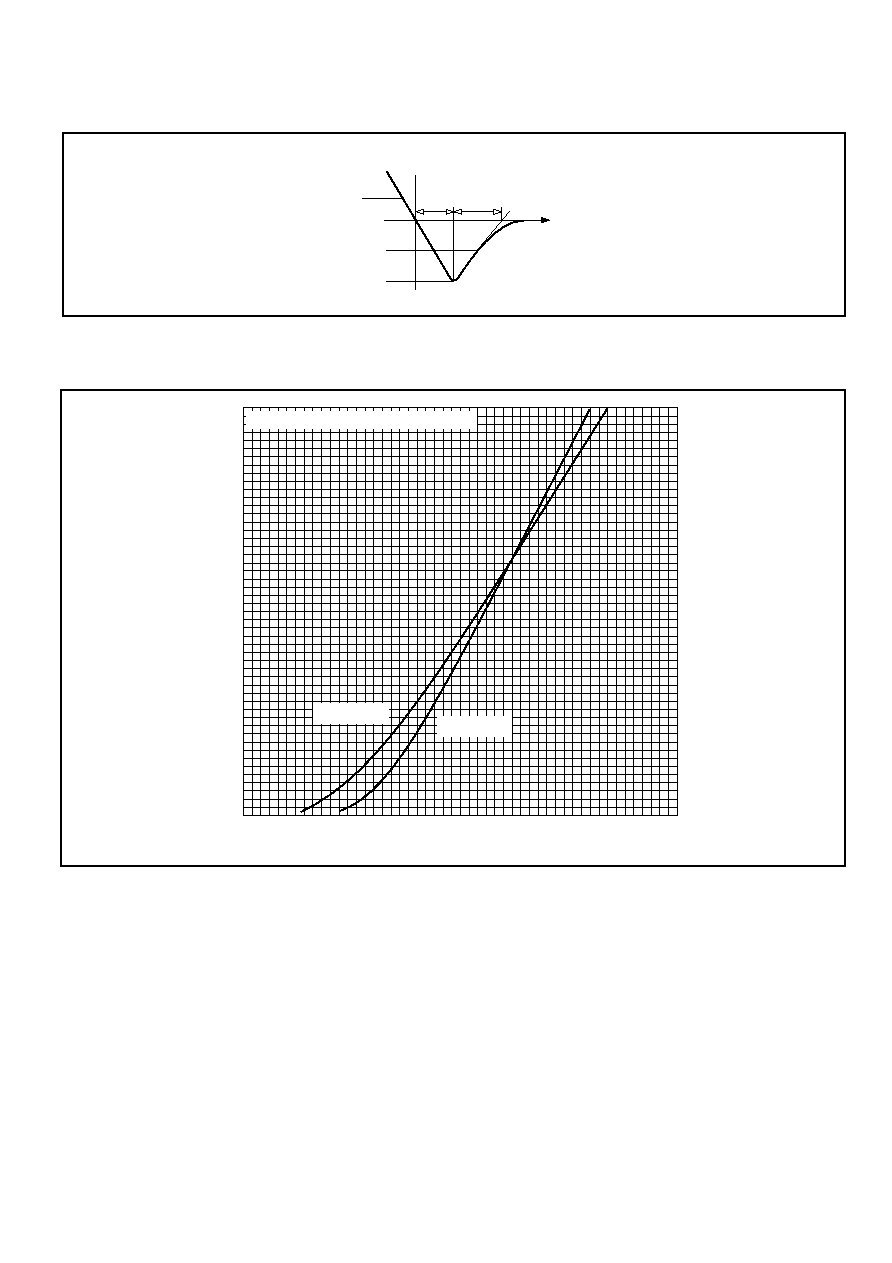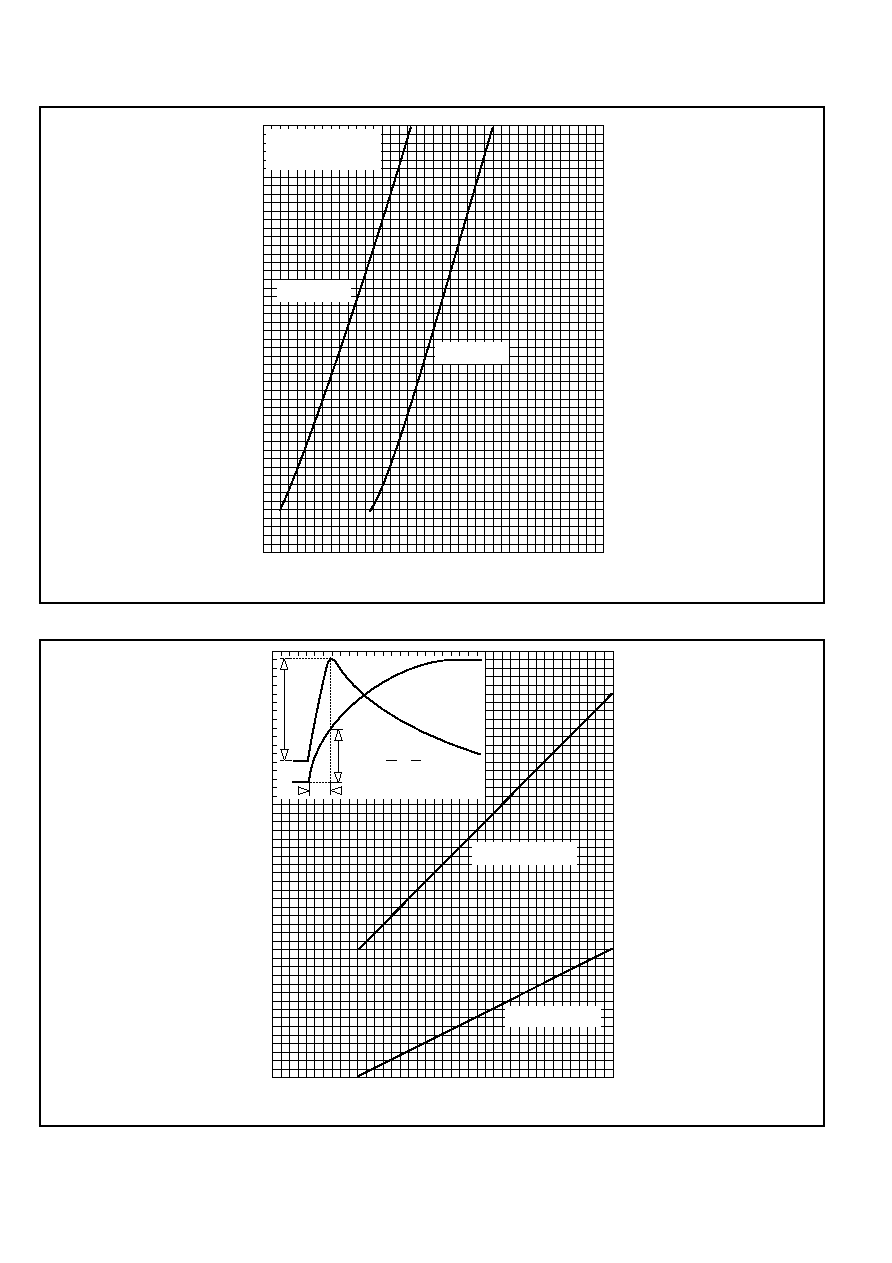 | –≠–ª–µ–∫—Ç—Ä–æ–Ω–Ω—ã–π –∫–æ–º–ø–æ–Ω–µ–Ω—Ç: MDFB5125 | –°–∫–∞—á–∞—Ç—å:  PDF PDF  ZIP ZIP |

MDFB51
1/8
FEATURES
q
Double side cooling
q
High surge capability
q
Low recovery charge
APPLICATIONS
q
Freewheel Diode
q
D.C. Motor Drives
q
Welding
q
High Frequency Rectification
q
Power Supplies
VOLTAGE RATINGS
KEY PARAMETERS
V
RRM
2500V
I
F(AV)
2212A
I
FSM
24000A
Q
r
1000
µ
C
t
rr
6.0
µ
s
CURRENT RATINGS
Symbol
Parameter
Conditions
Double Side Cooled
I
F(AV)
Mean forward current
I
F(RMS)
RMS value
I
F
Continuous (direct) forward current
Single Side Cooled (Anode side)
I
F(AV)
Mean forward current
I
F(RMS)
RMS value
I
F
Continuous (direct) forward current
Units
Max.
Half wave resistive load, T
case
= 65
o
C
2212
A
T
case
= 65
o
C
3850
A
T
case
= 65
o
C
3560
A
Half wave resistive load, T
case
= 65
o
C
1627
A
T
case
= 65
o
C
2555
A
T
case
= 65
o
C
2272
A
2500
2400
2200
2000
MDFB51 25
MDFB51 24
MDFB51 22
MDFB51 20
Conditions
V
RSM
= V
RRM
+ 100V
Lower voltage grades available.
Type Number
Repetitive Peak
Reverse Voltage
V
RRM
V
Outline type code: CB486.
See Package Details for further information.
MDFB51
Fast Recovery Diode
Advance Information
Replaces March 1999 version, DS4149-4.0
DS4148-5.0 January 2000

MDFB51
2/8
SURGE RATINGS
Conditions
Max.
Units
24.0
kA
2880 x 10
3
A
2
s
I
2
t for fusing
I
2
t
Surge (non-repetitive) forward current
I
FSM
Parameter
Symbol
10ms half sine; with 0% V
RRM,
T
j
= 150
o
C
19.2
kA
1843 x 10
3
A
2
s
I
2
t for fusing
I
2
t
Surge (non-repetitive) forward current
I
FSM
10ms half sine; with 50% V
RRM,
T
j
= 150
o
C
THERMAL AND MECHANICAL DATA
dc
Conditions
Max.
Units
o
C/W
-
0.021
Anode dc
Clamping force 44.0kN
with mounting compound
Thermal resistance - case to heatsink
R
th(c-h)
0.03
Double side
-
Single side
Thermal resistance - junction to case
R
th(j-c)
Single side cooled
Symbol
Parameter
-
0.06
o
C/W
o
C/W
Cathode dc
-
0.023
o
C/W
Double side cooled
-
0.011
o
C/W
T
stg
Storage temperature range
≠55
175
o
C
kN
44.0
40.0
Clamping force
-
T
vj
Virtual junction temperature
Foward (conducting)
-
150
o
C
Min.
CHARACTERISTICS
t
rr
100
Symbol
Typ.
Units
Parameter
V
FM
Forward voltage
I
RRM
Peak reverse current
Reverse recovery time
Q
RA1
Recovered charge (50% chord)
I
RM
Reverse recovery current
K
Soft factor
V
TO
Threshold voltage
r
T
Slope resistance
V
FRM
Forward recovery voltage
di/dt = 1000A/
µ
s, T
j
= 125
o
C
-
40
V
At T
vj
= 150
o
C
-
0.3
m
At T
vj
= 150
o
C
-
1.1
V
1.8
-
-
-
400
A
-
1000
µ
C
6.0
-
µ
s
At V
RRM
, T
case
= 150
o
C
-
mA
At 1500A peak, T
case
= 25
o
C
-
1.6
V
Conditions
Max.
I
F
= 1000A, di
RR
/dt = 100A/
µ
s
T
case
= 150
o
C, V
R
= 100V

MDFB51
3/8
CURVES
0
1000
2000
3000
4000
5000
Instantaneous forward current, I
F
- (A)
0.5
1.0
1.5
2.0
2.5
Instantaneous forward voltage, V
F
- (V)
Measured under pulse conditions
T
j
= 150∞C
T
j
= 25∞C
3.0
DEFINITION OF K FACTOR AND Q
RA1
0.5x I
RR
I
RR
dI
R
/dt
t
1
t
2
Q
RA1
= 0.5x I
RR
(t
1
+ t
2
)
k = t
1
/t
2
Figure 1 Maximim (limit) forward characteristics

MDFB51
4/8
0
100
200
300
400
500
Instantaneous forward current, I
F
- (A)
0.8
1.0
1.2
1.4
1.6
Instantaneous forward voltage, V
F
- (V)
Measured under
pulse conditions
T
j
= 150∞C
T
j
= 25∞C
15
25
35
45
55
65
Transient forward votage, V
FP
- (V)
0
500
1000
1500
2000
Rate of rise of forward current, dI
F
/dt - (A/
µ
s)
T
j
= 125∞C limit
T
j
= 25∞C limit
Current
waveform
Voltage
waveform
V
FR
y
x
di =
y
dt
x
Figure 2 Maximim (limit) forward characteristics
Figure 3 Transient forward voltage vs rate of rise of forward current

MDFB51
5/8
1
10
100
1000
Rate of rise of reverse current, dI
R
/dt - (A/
µ
s)
1000
100
10000
100000
Reverse recovered charge, Q
S
- (
µ
C)
A: I
F
= 4000A
B: I
F
= 2000A
C: I
F
= 1000A
D: I
F
= 500A
E: I
F
= 200A
F: I
F
= 100A
A
B
C
D
E
F
I
RR
Q
S
t
p
= 1ms
I
F
dI
R
/dt
Q
S
=
Conditions:
T
j
= 150∞C,
V
R
= 100V
50
µ
s
0
1
10
100
1000
Rate of rise of reverse current, dI
R
/dt - (A/
µ
s)
100
10
1000
10000
Reverse recovery current, I
RR
- (A)
Conditions:
T
j
= 150∞C,
V
R
= 100V
A: I
F
= 4000A
B: I
F
= 2000A
C: I
F
= 1000A
D: I
F
= 500A
E: I
F
= 200A
F: I
F
= 100A
A
B
D
E
F
C
Figure 4 Recovered charge
Figure 5 Maximum reverse recovery current vs rate of fall of forward current




